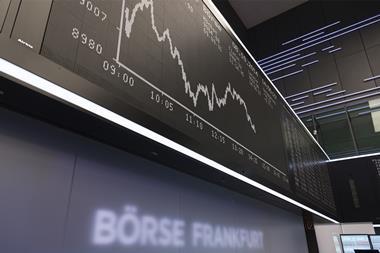German institutional investors have increased allocations to corporate bonds via Spezialfonds last year, cutting instead their exposure to government bonds, according to the latest analysis published by Universal Investment.
The allocation of government bonds in the portfolios of pension institutions, Pensionskassen, company pension funds (Betriebsrentenkassen), and foundations fell by around 0.7 percentage points, while the share of corporate bonds rose by around 1.7 percentage points, Universal added.
This represents a significant shift as asset owners tended to opt for new investments in government bonds, chief customer officer Katja Müller at Universal Investment told IPE.
Investments in German government bonds declined, according to Universal. As of December last year, investments in the asset class fell from more than 36% of total allocations to just over 30%, far below the level of more than 40% recorded at the start of the evaluation in 2011.
Institutional investors’ allocations to government bonds make up by far the largest share within fixed income portfolios, and experienced a significant jump in 2022, Universal added.
These allocations within institutional investors’ portfolios have been slowly but steadily increasing since the lowest allocation of around 36% recorded in October 2022, reaching 38.6% in December last year. This is still far below the level of 2012, when bonds made up almost 57% of investors’ portfolios.
Despite the upheavals of the past few years, the Spezialfonds analysed by Universal have recorded positive returns overall, of 7.2%, over one year, and 4.4% over a five-year period, as of 15 January.
Spezialfonds’ returns over a 10-year period was 3.8%, slightly below the 4% mark relevant for many institutional investors, Universal said.
The allocation to emerging market bonds went up slightly last year to almost 17%, from around 16% the prior year. Institutional investors have had faith in emerging markets in the past decade, strengthening allocations from only around 6% invested in the asset class in 2011, the firm added.
Investments in US Treasuries also went up from 11% to 12%, and French bonds from around 9% to just under 11%. Italian bonds, on the other hand, represent still just under 4% of the allocations, while the rest of Europe, including UK, remains close to zero, as does Russia, it added.
Looking for IPE’s latest magazine? Read the digital edition here























No comments yet